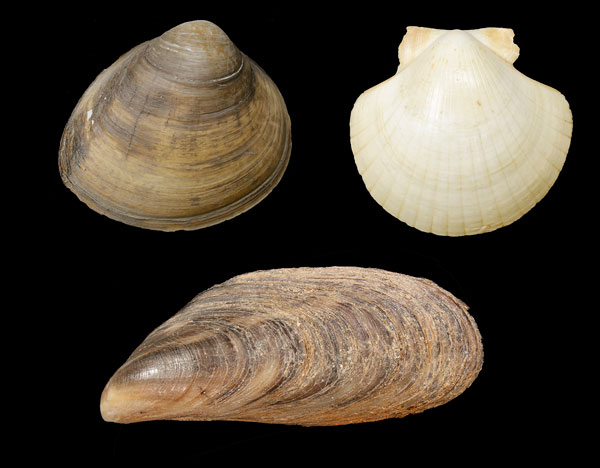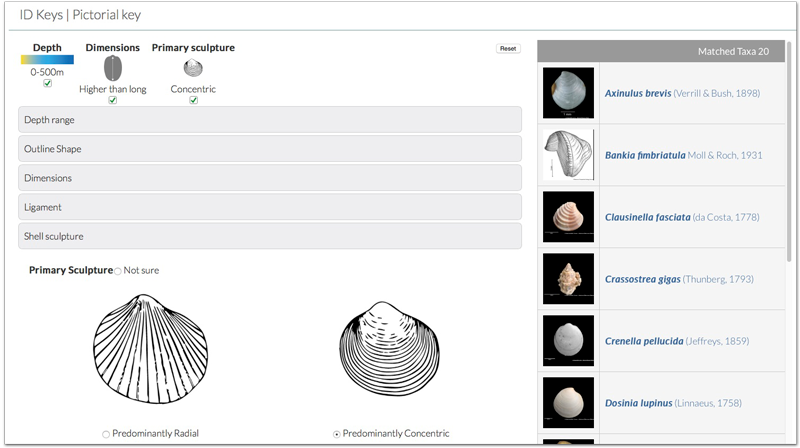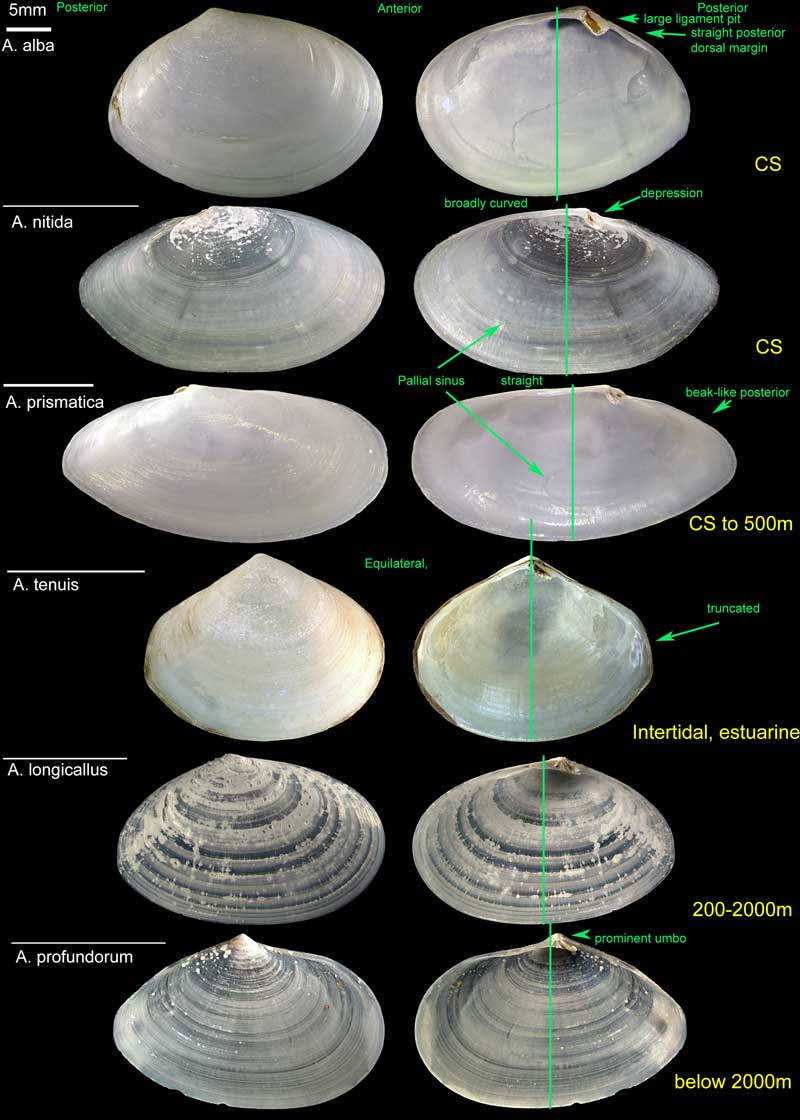New Features
Nomenclature
WoRMS (World Register of Marine Species) and the longer running CLEMAM (Checklist of the Marine Mollusca of Europe and the Mediterranean) have become invaluable tools to bivalve nomenclature since our website’s launch 6 years ago. We have updated our nomenclature to match WoRMS and/or CLEMAM unless there is a case where we do not agree and when this occurs we have added a "Notes on Nomenclature" section on the relevant species page for such notes.
Non-Natives
As well as several new species we have also added non-native species, many of which washed ashore after violent storms over the winters of 2013 and 2014. Most of the species are from the southeastern USA and new records on the southwest coasts of England and Ireland are common. Non-natives need to be correctly identified and flagged up so that relevant steps against potential invasive species can to be taken.

Interactive keys
Many regular users conveyed that they would like keys to species. We have used several levels of key to cover usage by biologists starting their careers and also experienced conchologists. There is a key for everyone!
Our interactive keys are still being illustrated but the key text is complete and they include every species that we contain in our database, which is over 380 species. If you encounter a species that does not appear in our database please do notify us -- we wish to include everything in the UK EEZ (see The Study Area) and the borders of that zone.
Pictorial Key
If you are unfamiliar with bivalves then you may wish to use the pictorial key, which gives an illustrated ‘running total’ of possible species on the right hand side of the screen. So, with a few well-chosen clicks of selected shell characters you could reduce your choice of species to just a few.Keys to major taxa
If you don’t recognise the species in front of you and don’t know where to start then the dichotomous key to major taxa is a good place to start. With links to all the superfamilies and in turn links to all species it can take you right down to the species level.Superfamily/major group keys
The more experienced biologist may recognise the bivalve as belonging to a particular taxonomic group so can go straight to that superfamily key.Comparative plates
Certain genera and juveniles are difficult to separate into species and many are commonly confused so to help out we have put together comparative plates to difficult genera. Every species within that genus is included on one plate for immediate comparison and key characters highlighted to help you distinguish species.



